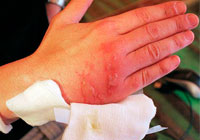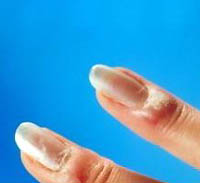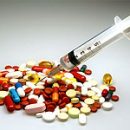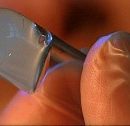Peritonitis is inflammation of the peritoneum, which is manifested by common symptoms of the disease, which are accompanied by a violation of the function of vital organs. Peritonitis can be primary or secondary. Primary peritonitis occurs during the defeat of the peritoness.
Content
The concept of acute peritonitis
Acute peritonitis - acute inflammation of the peritoneum, accompanied by severe common symptoms in violation of the function of vital organs and systems. Peritonitis can be primary and secondary. The idiopathic peritonitis is due to the primary damage to the peritoneum by microorganisms penetrating hematogenic or lymphogenic path, as well as through the uterine pipes (it is rare - about 1%). In the overwhelming majority of cases, peritonitis develops the secondary in purulent diseases and spout of hollow organs of the abdominal cavity, with traumatic damage to the abdomen, after intraperitoneal operations, during the transition to the peritoneum of the inflammatory process from neighboring and remote areas, during septic diseases. Acute peritonitis is characterized by the development of intoxication, which at the initial stage is associated with the circulation in the blood of biologically active substances (reactive phase), and in the late - with the circulation of expo and endotoxins (toxic phase) and the lesion of the central nervous system (terminal phase). Peritonit can be:
- Local
- limited
- Spilled (diffuse)
The main symptoms of the disease
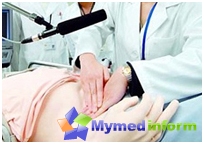 The most common cause of the development of acute peritonitis is appendicitis. Symptoms of primary disease. Patients usually complain of pain, which is the sharpest in the initial phase of the probulic peritonitis. Although, with diffuse peritonitis, pain extends to all the stomach, the intensity of its long time remains highest in the zone of the primary pathological focus. As inxication increases, the pain often subsides. Weaker than all pain is expressed in rapidly developed septic peritonitis. Along with the pain, as a rule, marked nausea and vomiting. Initially, vomiting is ordinary gastric contents, then - subfloody (vomiting brya, often with a grinding smell). Gradually vomiting is readier and with purulent spilled peritonitis often becomes a bent, leading to dehydration. Reception of fluid and food is practically impossible, despite the presence of painful thirst. In bed, the patient usually does not try to change the situation, since each movement enhances pain. Many make the pose with the thighs given to the belly (especially when capped peritonitis). At the very beginning of the disease, concerns are noted by its condition, later there may be inhibition. With further increasing of intoxication, euphoria occurs, which is a bad prognostic sign. Heavy intoxication pain decreases, which can create an erroneous impression of improved patient's condition. In this period, intoxication psychoses are often developing. However, in the overwhelming majority of cases, consciousness persists before the onset of agony.
The most common cause of the development of acute peritonitis is appendicitis. Symptoms of primary disease. Patients usually complain of pain, which is the sharpest in the initial phase of the probulic peritonitis. Although, with diffuse peritonitis, pain extends to all the stomach, the intensity of its long time remains highest in the zone of the primary pathological focus. As inxication increases, the pain often subsides. Weaker than all pain is expressed in rapidly developed septic peritonitis. Along with the pain, as a rule, marked nausea and vomiting. Initially, vomiting is ordinary gastric contents, then - subfloody (vomiting brya, often with a grinding smell). Gradually vomiting is readier and with purulent spilled peritonitis often becomes a bent, leading to dehydration. Reception of fluid and food is practically impossible, despite the presence of painful thirst. In bed, the patient usually does not try to change the situation, since each movement enhances pain. Many make the pose with the thighs given to the belly (especially when capped peritonitis). At the very beginning of the disease, concerns are noted by its condition, later there may be inhibition. With further increasing of intoxication, euphoria occurs, which is a bad prognostic sign. Heavy intoxication pain decreases, which can create an erroneous impression of improved patient's condition. In this period, intoxication psychoses are often developing. However, in the overwhelming majority of cases, consciousness persists before the onset of agony.
The appearance of the patient indicates severe intoxication and dehydration. The features of the face are sharpened, a pallor appears with a grayish and cyanotic tint, dry lips, braided, on the face and limbs is cold sweat. In severe cases, jaundice may appear, testifying to toxic lesions of the liver or hemolysis.
Pulse is raised (100-120-140 per 1 min). Hell with increasing intoxication falls. In the terminal phase, severe collapse develops, from which the patient is almost impossible to derive. Temperature rises at the beginning of the disease to 38-39 °With, but parallel to deterioration of the patient's condition may decrease. In the terminal period of the disease, it often turns out to be below 36 °WITH. It is characteristic that with increasing tachycardia, most often no correspondence between body temperature and pulse frequency. Chills occurring at a relatively low temperature testifies to very severe intoxication.
With palpation of the abdomen, there is a soreness in all departments, the most intense - when pressed on the navel. The symptom of Brush-Blumberg is also expressed throughout the stomach. The tension of the abdominal wall muscles, extremely characteristic for peritonitis, as the general state of the patient deteriorates, can gradually disappear, while the paresis of the intestine and the stomach increases. With auscultation of the abdomen marks «Coffin silence», But wired respiratory noises can listen. The bloating sharply makes it difficult to breathe, makes it breast, and circulatory disorders and often joining pneumonia contributes to increasing shortness of breath. In the presence of exudate in the abdominal cavity, the purlization of the percussion sound is determined in the detached stomach places.
Diagnosis of peritonitis
Peritonitis recognition helps vaginal and rectal studies, in which soreness is detected due to the involvement of a small pelvis in the inflammatory process. In the study of blood, increasing leukocytosis is detected, increased EN. Heavy septic peritonitis can cause the oppression of leukopopower, which indicates the extremely severe form of the disease. An increase in the concentration of hemoglobin and hematocrit indicates blood and dehydration concentration. For diffuse peritonitis, increasing hypochromic anemia is characteristic. In the urine, protein, red blood cells, leukocytes, granular cylinders appear, and the total amount of urine decreases. In the elderly, the symptoms of peritonitis often turn out to be weakly pronounced. In children, on the contrary, there is more often the rapid development of peritonitis. The accumulation of the inflammatory process in the abdominal cavity has much less frequently than adults.
In obscure cases, radiographic research and laparoscopy can help diagnosis in the hospital.



